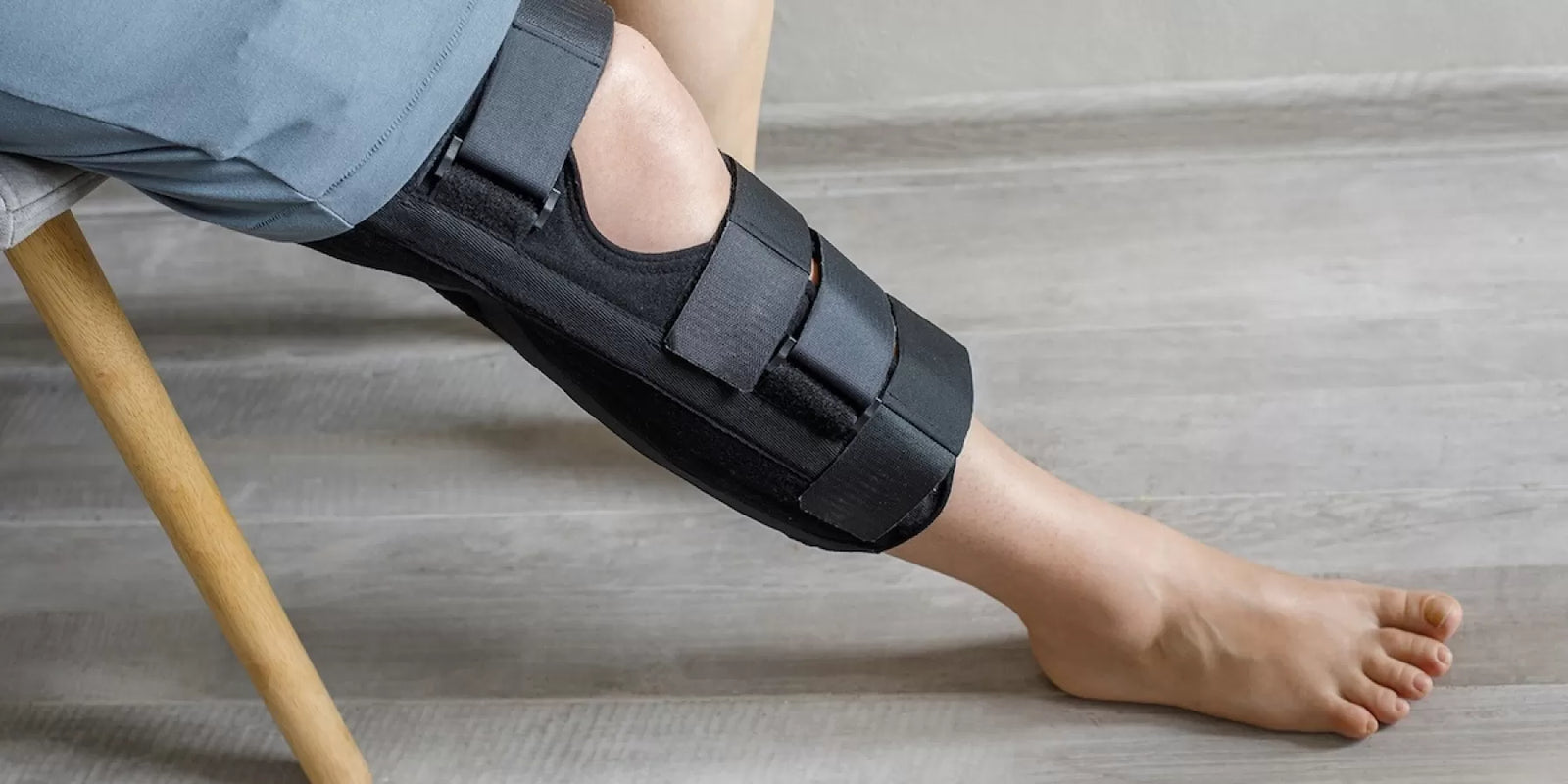Find the Right Fit: A Guide to Orthopedic Braces

Orthopedic braces play a crucial role in supporting and healing weak joints. Choosing to use an orthopedic brace is an important decision that comes with many questions. These braces have a wide range of uses, from preventing injuries to helping after surgery, and they are made to meet individual needs. However, the large selection can be confusing for patients. This guide aims to make understanding orthopedic braces easier, providing essential information for seniors, physical therapists, athletes, and anyone interested in orthopedic health.
Understanding Orthopedic Braces
The use of orthopedic braces is a staple in the field of injury rehabilitation and management. Braces serve several key functions, including providing structural reinforcement to a joint, such as orthopedic ankle braces, correcting alignment issues, and allowing mobility while inhibiting harmful motions.
In what scenarios are orthopedic braces typically deployed? Quite broadly, they are used in cases of ligament injuries, post-fracture stabilization, arthritis management, and chronic ailment support. Understanding their importance is critical to appreciating their place in the therapeutic process.
Exploring the Functionality of Orthopedic Braces
Realizing the full potential of orthopedic braces hinges on detailed knowledge of their jobs. Keep reading to understand the functional aspects of different types of orthopedic braces, how they aid in recovery and prevent further deterioration.
Enhancing Stability and Preventing Injury
Orthopedic knee braces, for example, are designed with rigid metal supports or flexible materials, offering crucial reinforcement to the knee joint. By doing so, they prevent excessive varus or valgus forces that can lead to injury.
Aiding Rehabilitation Post-Surgery
Following orthopedic surgery, the affected joint often requires a period of immobilization and a gradual return to movement. Braces crafted for post-surgical rehabilitation facilitate this process by providing the necessary support, limiting pain, and fostering a secure environment for healing.
Correcting and Aligning
In cases of malalignment, orthopedic braces can be instrumental in correcting joint positioning. Braces are custom-fitted to apply gentle and consistent pressure, coaxing the joint toward the correct anatomical alignment over time.
Easing Pain and Discomfort
Arthritis and other chronic conditions require management strategies that can provide relief from persistent pain. Orthopedic braces tailored for these conditions help distribute body weight more evenly, alleviate pain, and provide warmth to the affected joint, which can be especially comforting.
The Myths and Realities of Orthopedic Braces
Myth: Braces Weaken Muscles and Ligaments
One of the most common beliefs is that the use of orthopedic braces can lead to muscle atrophy. The reality, supported by extensive research, is quite the opposite. Braces provide temporary supplement to the musculoskeletal system and aid in maintaining muscle strength during periods of disuse or underuse.
Myth: Braces Are Only for Serious Athletes
While orthopedic braces are often associated with elite athletes, their usefulness is not confined to this demographic. Everyday individuals, the elderly, and anyone recovering from an injury can benefit from the preventive and therapeutic aspects of bracing.
Choosing the Right Orthopedic Brace
Selecting the appropriate orthopedic brace isn't as straightforward as it may seem. Things to consider when selecting a brace include medical advice, personal lifestyle, and the nature of the injury.
Consulting with a Healthcare Professional
Before purchasing a brace, consultation with a healthcare provider, particularly one specialized in orthopedics, is essential. These professionals can offer tailored guidance that takes into account the specifics of the condition and the unique needs of the patient.
Considering Lifestyle and Mobility Needs
Different types of orthopedic braces accommodate various activity levels and lifestyles. An active individual may need a brace that allows for more movement and breathability, while someone with a sedentary lifestyle may prioritize comfort over flexibility.
Need more help getting mobile? Shop mobility aids
Evaluating the Quality and Durability of Braces
Investing in a high-quality orthopedic brace is crucial to care and recovery. Skimping on the cost may lead to purchasing a substandard product that fails to provide the support and durability needed for healing.
Maintaining and Operating Your Orthopedic Brace
Once the right orthopedic brace is chosen, proper maintenance and usage are crucial aspects of the rehabilitation process. Understanding how to operate the brace effectively and care for it will improve user comfort and product lifespan.
Cleaning and Care Instructions
Regular cleaning of orthopedic braces is vital to prevent the buildup of bacteria and associated odors. Each brace comes with its care instructions, ranging from hand washing with mild detergent to the use of disinfectant solutions for particularly invasive surgeries.
Shop cleaning solutions
Learning to Operate Your Brace Safely
Orthopedic braces can be intricate, especially those used post-surgery or for correctional purposes. Taking the time to familiarize oneself with the proper way to put on, adjust, and remove the brace is key to avoiding user-induced complications.
Monitoring for Signs of Wear and Tear
Over time, the materials of orthopedic braces may deteriorate. Regular inspection is necessary to identify signs of wear, such as fraying straps or weakened support structures. Timely maintenance or replacement can avert associated risks.
Choosing an Orthopedic brace
Orthopedic braces are an important tool for individuals who need them. Understanding their functionality, care, and how to choose the correct one is essential when considering buying one. Orthopedic braces serve a greater purpose than just physical support; they play a crucial role in the recovery process and maintaining long-term joint health.
FAQs
What are orthopedic braces for?
Orthopedic braces are used to support and limit the motion of affected joints and body parts. They're commonly prescribed for sports injuries, rehabilitation post-surgery, and to manage chronic conditions.
What is the difference between a knee brace and a knee sleeve? The primary difference lies in the purpose and support provided. A knee brace is typically more rigid and is designed to offer structural support, while a knee sleeve is a compression garment that provides warmth and mild support.
Are orthopedic braces covered by insurance?
In many cases, yes. If the brace is deemed medically necessary by a physician, health insurance may cover some or all of the costs. It's important to confirm coverage with the insurance provider prior to purchasing the brace.
How long should I wear an orthopedic brace?
The period of brace wear varies depending on the diagnosis and treatment plan. It could range from a few weeks to several months. Medical professionals will provide specific wear instructions based on individual needs.
As a leading supplier of durable and home medical equipment (DME and HME), ApriaHome sources and distributes a wide range of treatment solutions, including medical equipment and mobility solutions.
We're here to support you as you work toward your improved health and well-being. We strive to meet your ever-evolving healthcare requirements with individualized attention and premium quality treatment solutions.
Looking to add orthopedic supplies? Browse our premium solutions and let us help you get the most out of every day.
Looking for advice? Our helpful agents are on call at (800) 780-1508 between 8:00 am - 10:00 pm EST daily. Get in touch today.



